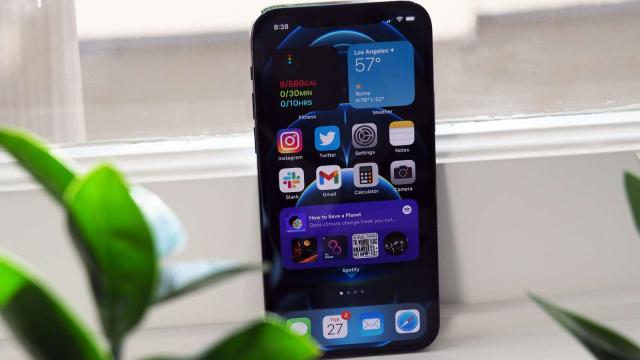One of the few disappointments with this year’s iPhones are their lack of support for displays with high refresh rates. Based on new reports, it seems that could change for at least two versions of iPhone 13 next year.
According to a report from Korean tech news outlet the Elec, next year Apple is hoping to ship between 160 and 180 million iPhones in 2021 (up from around 100 million in 2020), with every model of the iPhone 13 expected to feature some kind of OLED screen. But more importantly, the Elec claims that at least two of the four new iPhone 13 models (most likely the Pro variants) will feature screens with low-temperature polycrystalline oxide (LTPO) thin-film transistors that will allow those models to support 120Hz refresh rates.
Currently, Apple sources the displays used in iPhones from three main suppliers: with the Elec saying Samsung is expected to provide the lion’s share of panels in 2021 with shipments of around 130 to 140 million displays, followed by LG supplying between 30 and 40 million panels, and Chinese display maker BOE filling out any remaining orders, potentially shipping between 10 and 20 million screens. However, the Elec says that in order to supply those components, BOE will need to reapply to become an approved vendor in Apple’s supply chain after failing twice during Apple’s regular quality assurance reviews.
While reviews for the iPhone 12 line across the industry have been generally quite positive this year including our reviews of the iPhone 12, iPhone 12 Pro, iPhone 12 Pro Max, and iPhone 12 Mini, the lack of support for high refresh rate displays by Apple was a curious omission, especially after early rumours claimed Apple had been testing the feature on a handful of prototype units prior to launch.
In comparison, this year Samsung introduced support for 120Hz refresh rates on the Galaxy S20 line, before further refining the tech with its new 120Hz VRR panels that debuted on the Galaxy Note 20 Ultra. That not only delivered a 120Hz refresh, but also offered the ability to dynamically adjust the screen’s refresh rate depending on the content you’re viewing to help improve energy efficiency.
And it wasn’t just the Samsung that upgraded to high refresh-rate displays this year, with OnePlus also giving the OnePlus 8 Pro a 120Hz screen sourced from Samsung, while Asus went even higher by giving the ROG Phone 3 a 144Hz display. And even though Google didn’t make a true high-end premium phone this year, the Pixel 5 still retained a similar 90Hz display to the one Google debuted on the Pixel 4 in 2019. At this point, the push for smartphone screens with higher refresh rates has been a growing trend for quite some time mirroring a similar trend for high-end monitors and laptops. High refresh rate displays can significantly improve the smoothness and fluidity of a wide range of content including games, web surfing, and more.
So while it’s a bit strange that Apple wasn’t able to hop on the high refresh rate trend this year, it seems Apple could be well underway in prepping the iPhone 13 (at least the Pro models) to get a major display upgrade next year.
